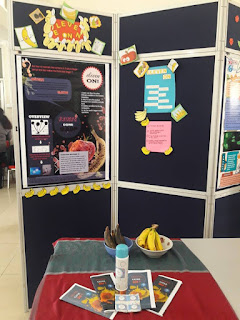E-Portfolio Microbiology II Week 10
Hello people :)
In our microbiology class this week, Dr Suriana taught us on recombinant and mutation of DNA and RNA.
In our microbiology class this week, Dr Suriana taught us on recombinant and mutation of DNA and RNA.
Recombinant DNA (rDNA) molecules
are DNA molecules formed by laboratory methods of genetic recombination (such
as molecular cloning) to bring together genetic material from multiple sources,
creating sequences that would not otherwise be found in the genome. Recombinant
DNA in a living organism was first achieved in 1973 by Herbert Boyer, of the
University of California at San Francisco, and Stanley Cohen, at Stanford
University, who used E. coli restriction enzymes to insert foreign DNA into
plasmids. (Source: Wikipedia)
DNA mutations are permanent
changes in the DNA sequence of a gene. Mutations range in their severity. Some
damage the way a cell or whole organism functions, or even cause lethality,
while others have no effect. Mutations also range in the amount of DNA altered.
They can involve from a single nucleotide up to large segments of chromosomes.
Types of mutation:
- Insertion/Duplication/Deletion: the addition or subtraction of nucleotides from DNA sequence. They can be as small as single nucleotides or large enough to visualize on a chromosome and involve tens to hundreds of thousands of nucleotides.
- Point Mutation: the change in one nucleotide for another. For example, an “A” becomes a “T”.
- Translocation: the movement of a segment of DNA from one chromosome to another.
- Inversion: the 180° flip of a DNA segment so that that it is reversed compared to the original structure.


Ulasan
Catat Ulasan